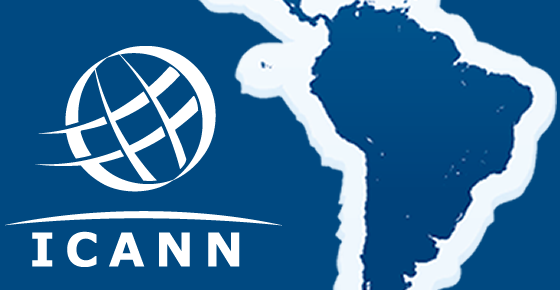ICANN Engagement Center to Open at Casa de Internet
12/06/2013


The announcement was made by Rodrigo de la Parra, ICANN Vice President for Latin America. This Engagement Center is part of ICANN’s strategy for Latin America and the Caribbean presented during the LACNIC 19 event held in Medellin. The new center, only the second of its kind, will be based in Casa de Internet (The House of the Internet) located in Montevideo, Uruguay
By Pablo Izmirlian
With the aim of increasing participation and improving its engagement with the the Latin American and Caribbean Internet community, during the LACNIC 19 event held in Medellin, the Internet Corporation for Assigned Names and Numbers (ICANN) presented its Engagement Strategy for Latin America and the Caribbean. “We must think of this plan as a plan for the region, for the various stakeholders involved in the development of critical Internet infrastructure, rather than a plan for ICANN,” says Rodrigo de la Parra, ICANN Vice President for Latin America, who moderated a panel on this topic on the afternoon of 6 May, the second day of LACNIC 19 activities in Medellin. “What ICANN did was provide administrative and logistical support for the plan, but in the end it was the community who developed it,” he explained.
Why was it important for you to present the strategic plan at this event?
This plan is very important because many great things have already been done in Latin America, and much of the success of Internet development in the region has been precisely due to the outstanding work carried out by LACNIC. Above and beyond its primary responsibility of being an address registry, the organization has become a leader in other areas relating to Internet development in general. The work of other organizations such as LACTLD, more recently LAC-IX, and all others involved has of course also played an important role. This has been great, yet several challenges remain. From ICANN’s point of view, certain interest groups are still underrepresented within ICANN. Many of the actions included in the strategic plan aim at improving this situation and encouraging the participation of groups who are not already actively involved. Today, for example, there is no gTLD (generic Top-Level Domain) registry in the region – some applications are in the process of being evaluated, yet we don’t know how many of them will be approved. There are not enough registrars, the commercial arm in direct contact with users looking to register a domain name. Only 19 of the 1000 existing registrars are located in Latin America, which is why some projects aim at promoting this issue. We have also identified certain barriers that hinder participation in ICANN, such as language barriers, budgetary barriers, and others.
Does ICANN have similar plans for other regions?
These plans currently only exist for Africa and Latin America, while plans are also being developed for the Middle East and Asia Pacific. It’s a process which greatly depends on the speed at which the community itself wants to move forward. The plan is well designed but now the next step involves precisely the huge challenge posed by its implementation. ICANN, on the other hand, with its strategy of reaching out and engaging the different regions, has an ambitious plan to take the center of gravity originally located in the United States and move it around the world. ICANN is now establishing headquarters that will perform the same functions. One of these headquarters will remain in Los Angeles to serve the Americas, one of them was recently opened in Istanbul to serve Europe and Africa, while the third one, located in Singapore, will serve Asia. The logic behind these headquarters is based on time zones: the three “mirror” headquarters will do all the same things. We are also opening other regional engagement centers, the first of which was announced for Beijing and the second of which will be in the region of Latin America and the Caribbean. This makes us really happy.
Where will the center be based?
It will be based in Montevideo, at the Latin American and Caribbean House of the Internet. What LACNIC and the other members the House have achieved is unprecedented – there is nothing like this in any other region. Here in Latin America we have traditionally worked very well and ICANN will join that positive inertia, the joint efforts of different organizations, notably the Internet technical community. In just a few days we will have a person working full-time on communications and media relations, producing guidance material so that people throughout the region will know what is being discussed at ICANN. This will hopefully help them become more involved.
Regional four-front strategy
“A plan was developed covering four main areas: political affairs, which aims to improve ICANN’s engagement with regional organizations; capacity building, which is the name now given to training and outreach, i.e. reaching an increasing number of people; a third area which deals with operational aspects including proper IPv6 deployment; and, finally, economic issues, the goal of which is that Latin America and the Caribbean will have a stronger, more relevant, more participatory industry and DNS sector.”
(Free access, no subscription required)